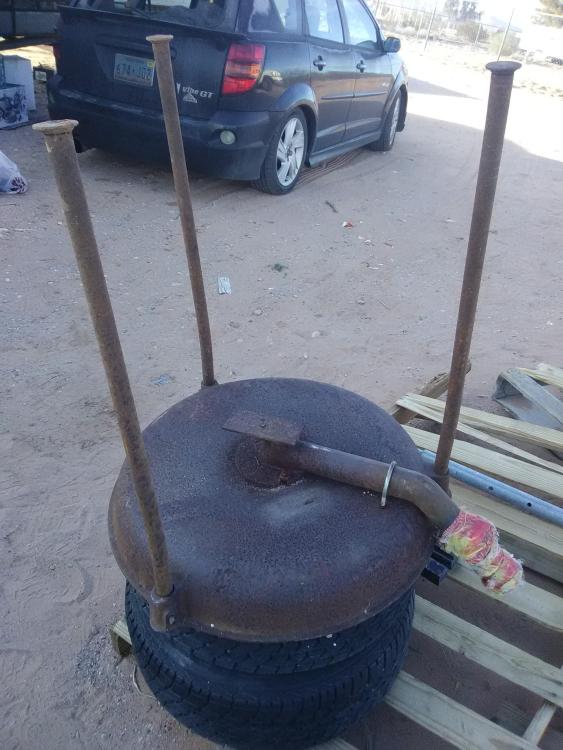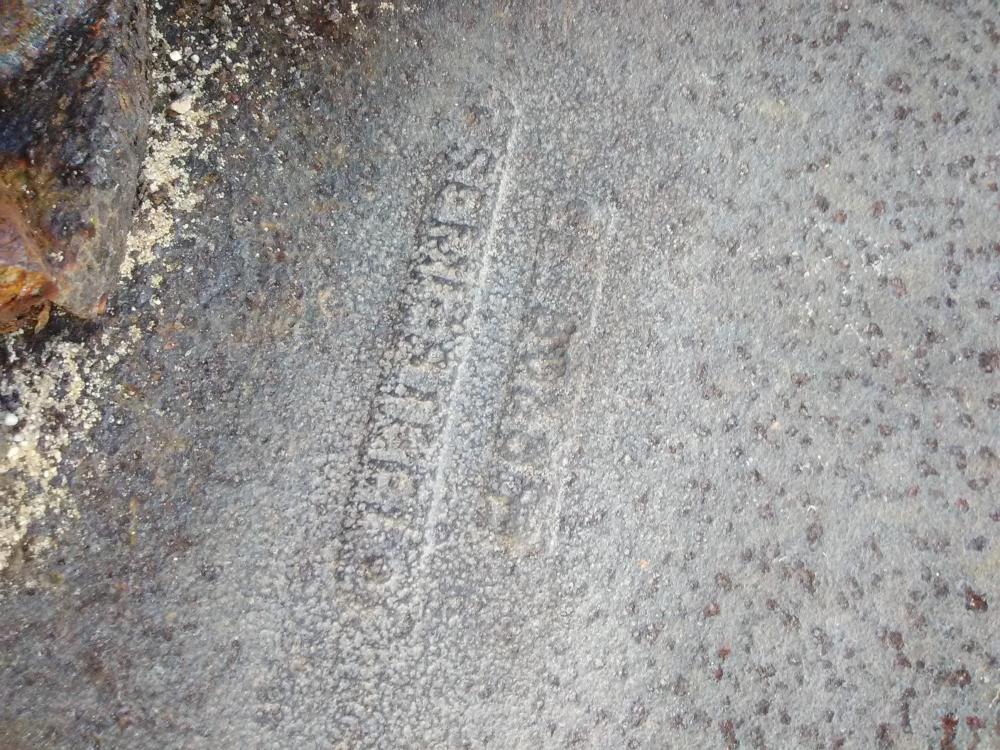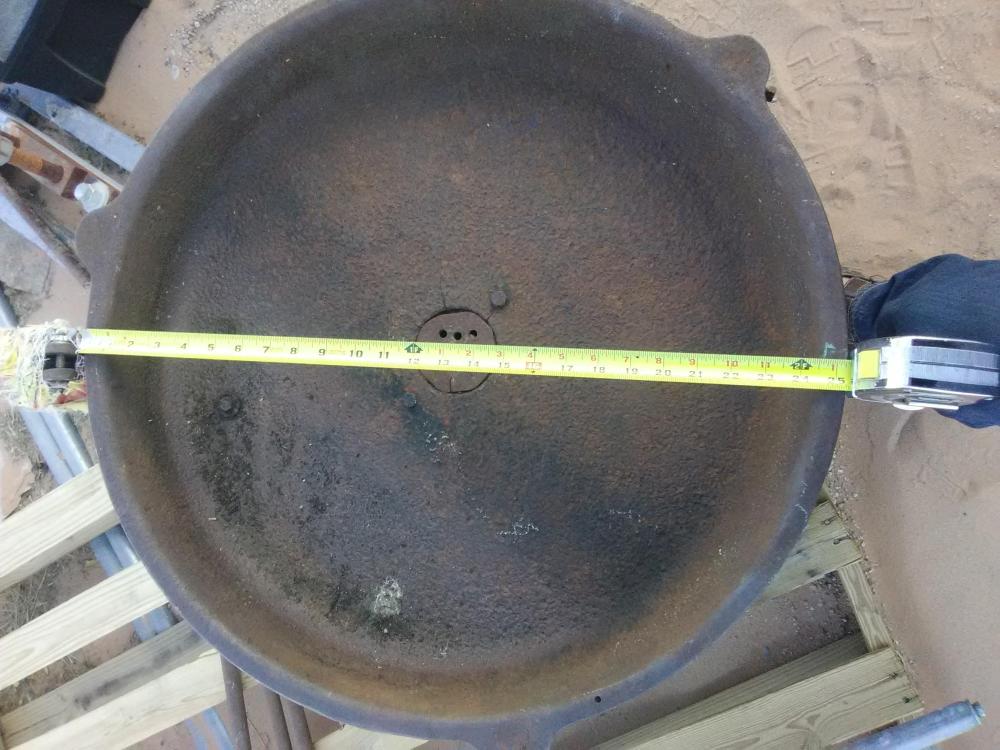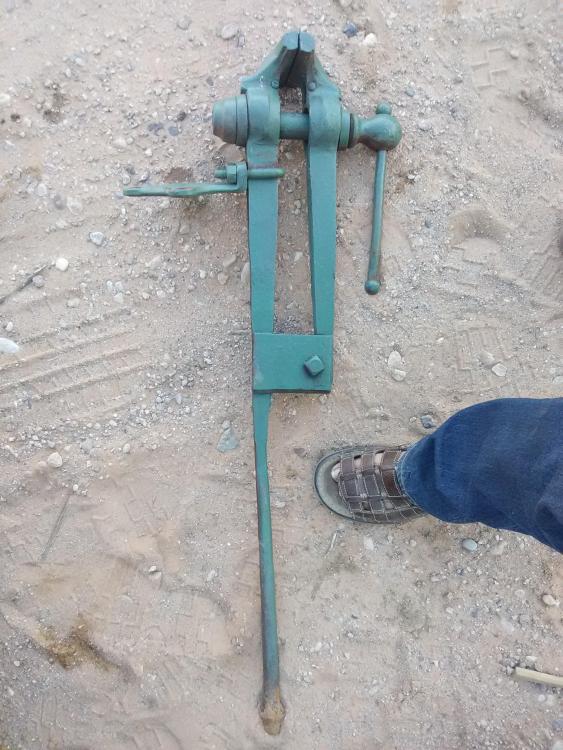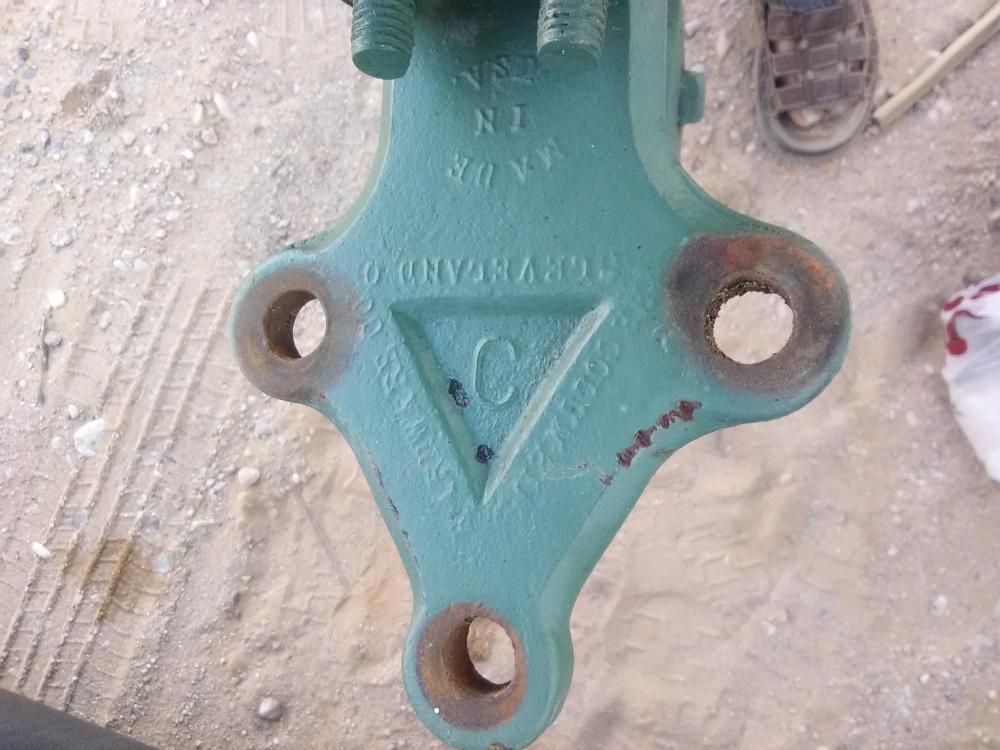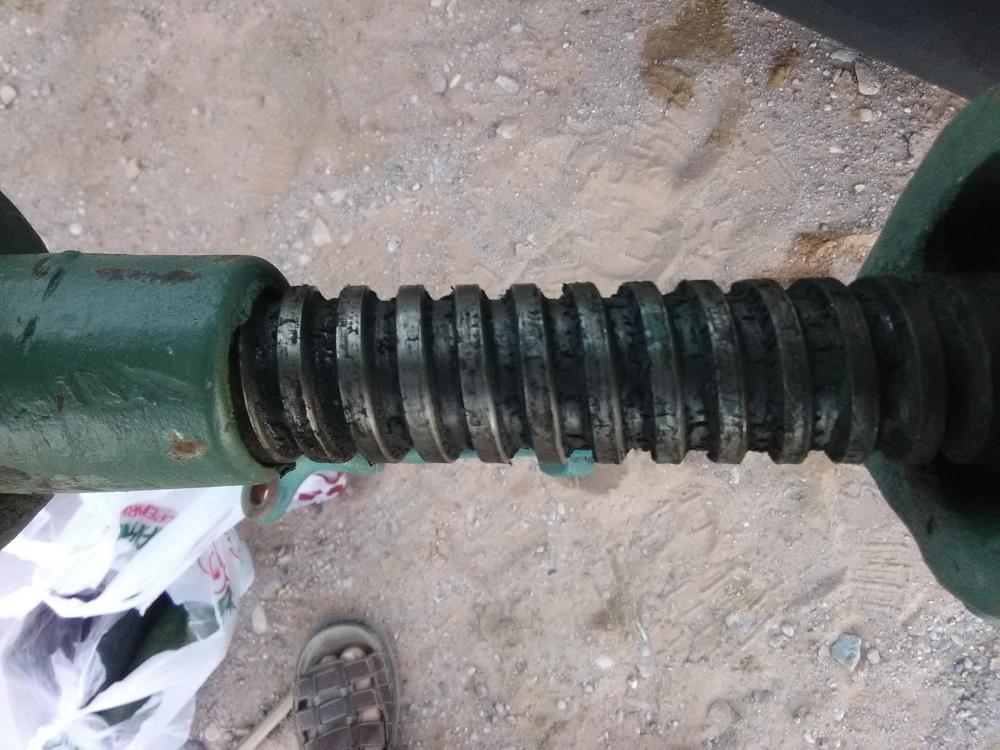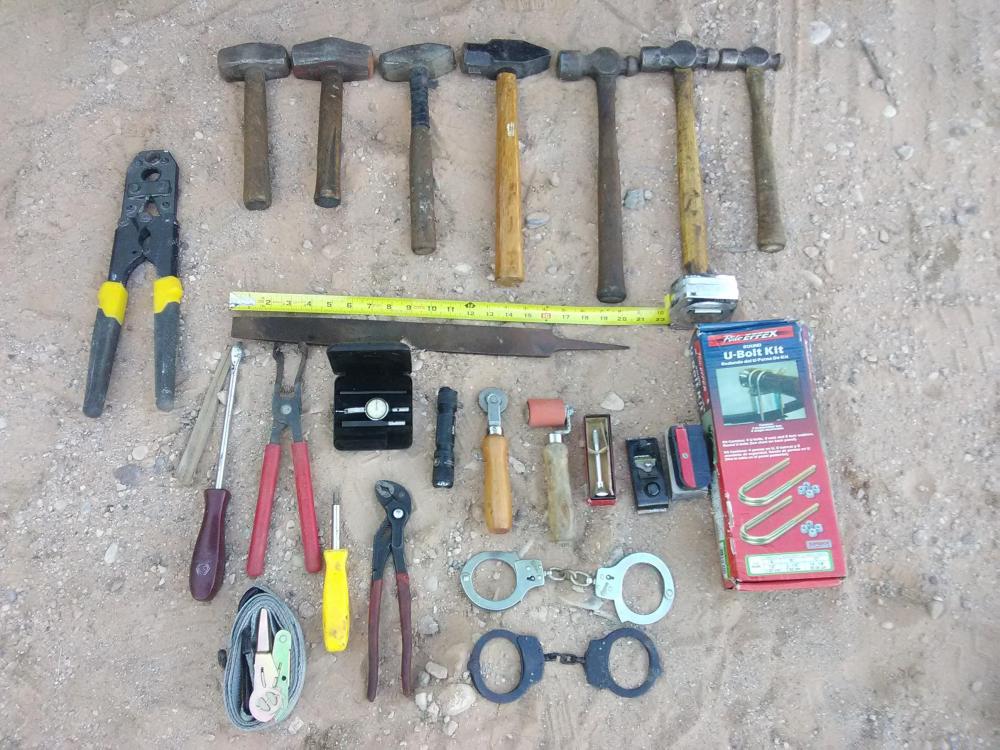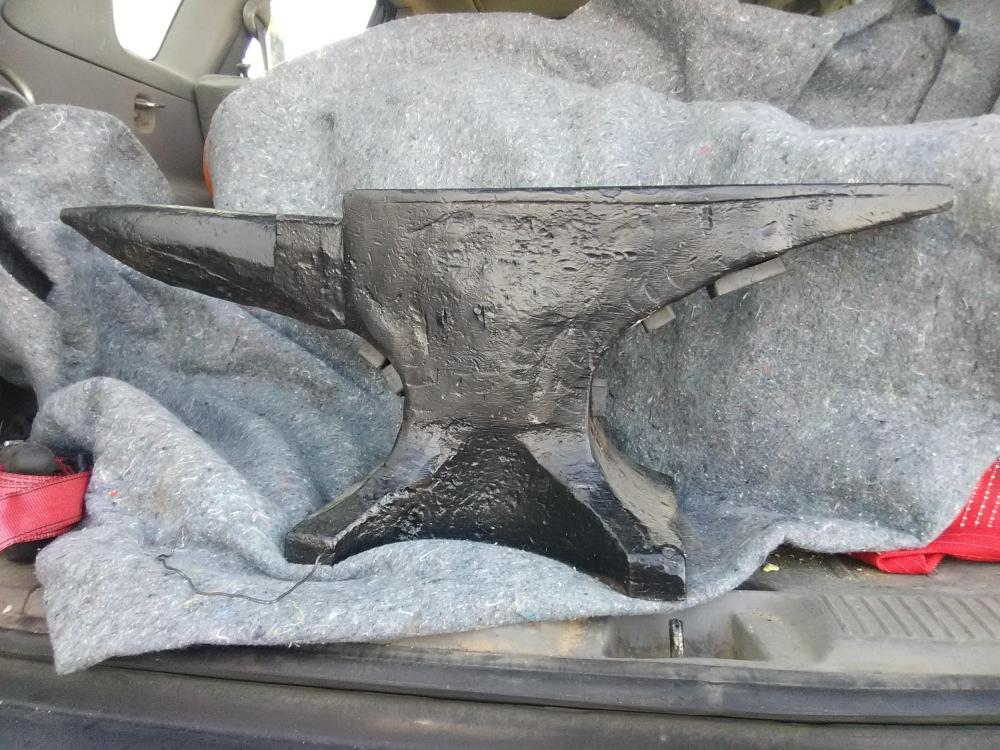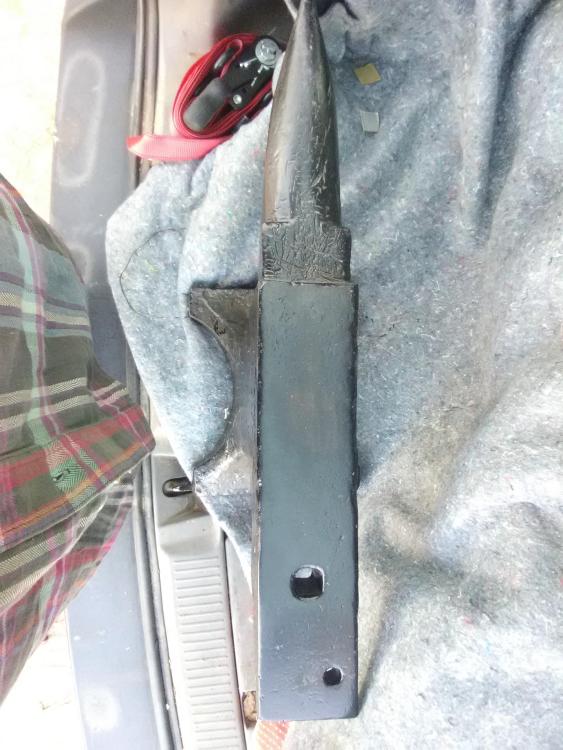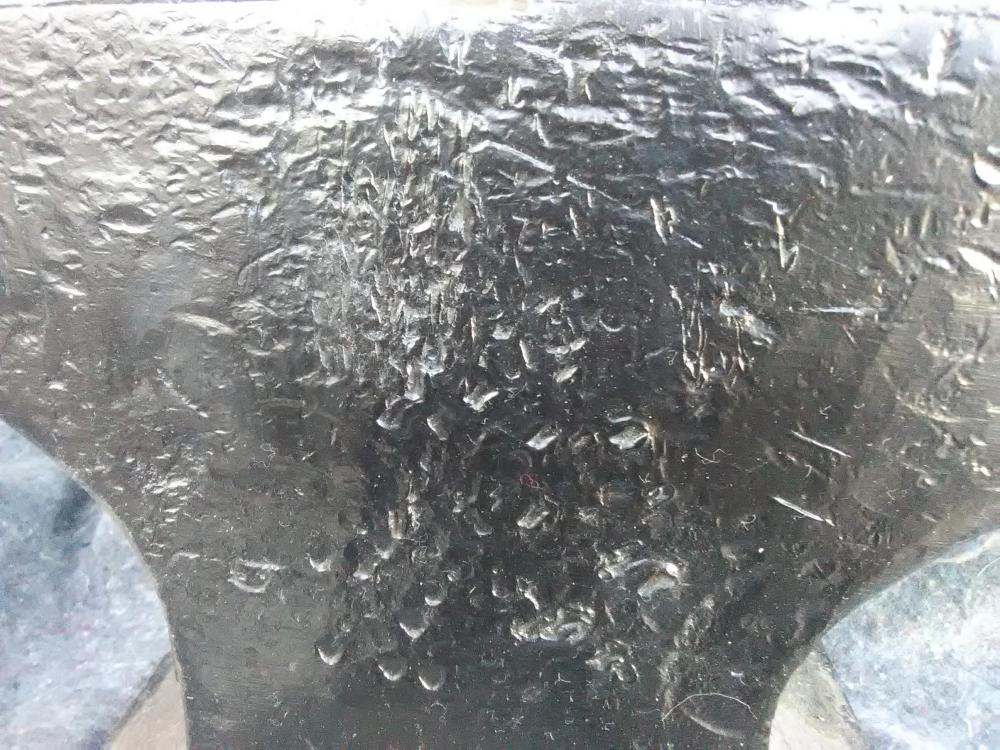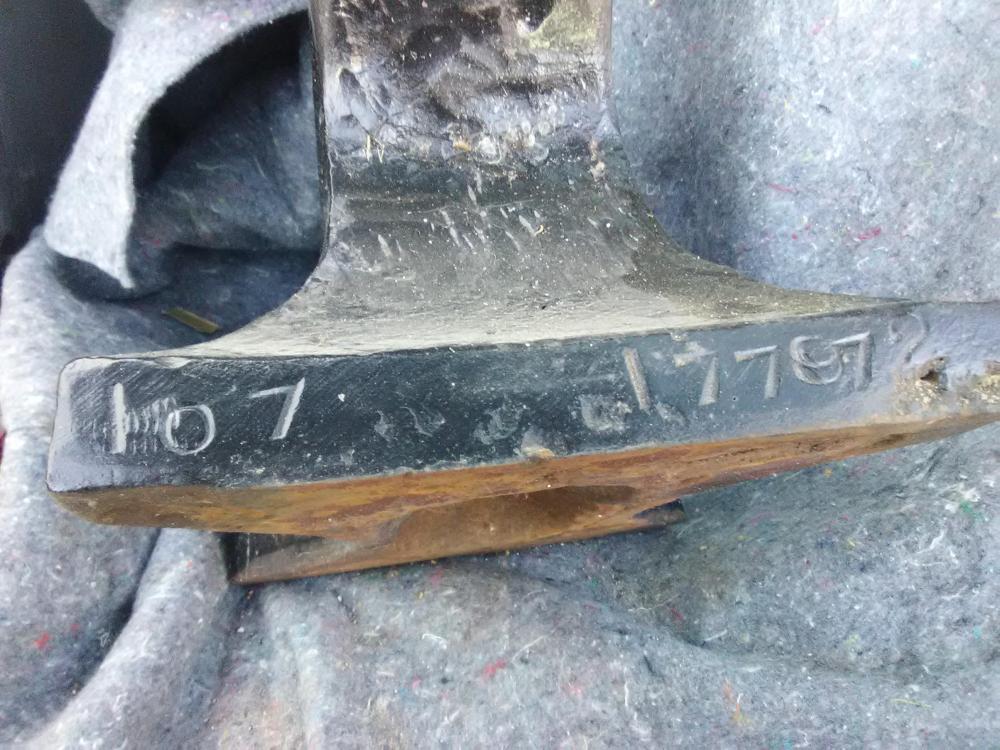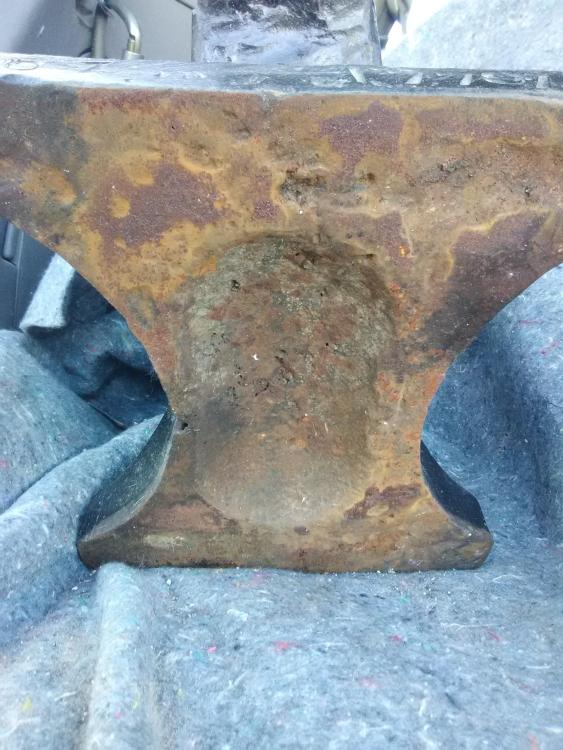-
Posts
6,051 -
Joined
-
Last visited
Content Type
Profiles
Forums
Articles
Gallery
Downloads
Events
Everything posted by BIGGUNDOCTOR
-
Yes, roll the connected base of the petals over so when it is wound up the base part is tight to the stem, and not simply hanging straight down. Then wind in a helical way so the inner petals are above the outer ones in order to keep the base of each petal tight to the stem. In my way of thinking the inner petal would be forged shorter, and the outer ones taller - tapering bigger along the length of the bar to compensate for being wound in a tight helix.
-
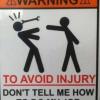
Anvil rebound,- horse poo?
BIGGUNDOCTOR replied to emtor's topic in Anvils, Swage Blocks, and Mandrels
Old thread restart. OK, I am in the rebound doesn't matter camp myself, and think the only way to settle it would be to have a material science lab do some experiments. Maybe Thomas could get the university to do some. Identical anvils made from various materials like mild steel , medium carbon steel, and high carbon steel, and heat treated to different hardness from mild's dead soft to as hard as the HC can attain, or maybe better, do a set with HC annealed, mid hard, and full hard. Heat test samples to the same temp, and strike them with the exact same force in a test rig. A brake may need to be applied to catch the hammer if it does rebound to prevent a secondary blow if a simple free fall drop rig is used. Maybe measure the rebound as well. Now the amount of force used could be a factor. I would say to simulate the force of a 3# hammer swung at average speed. Then measure how much the material moves / thickness. I suspect some "felt" difference smiths have could be from the style of hammer used, and the struck surface. A rounding hammer, or one tipped more forward would concentrate the force. Peter Wright's have soft wrought iron bodies that tend to sag over time, and I have yet to see a cast iron bodied Fisher with any sway. New anvils are 99% cast from various alloys from ductile iron, to H13, so you would think they would absorb energy differently, but being cast may have a rigidity advantage. I say the hard face just allows the face to hold up better over time. I never felt any difference between my 260# Fisher, 306# Soderfors, nor my 125# JHM which are all cast bodies. Not enough time on my 150# Vulcan (cast), 138# PW (wrought), or 170# HB (made in 1920 so not sure of construction at that time) to make a call, but the extremes would be the Vulcan and the Soderfors for hardness. But, I would tend to say the sheer mass of the Swede would be the deciding factor between those two. Does just a hard face plate on a soft body make a difference compared to a fully hardened cast anvil like a Holland? Most anvils are not fully hardened through and through, just a relatively thin hard surface on a much softer body. So, is that thin hard layer all that is needed to vastly improve anvil performance and make a smith work that much less? Brian Brazeal uses a chunk of thick plate on end to good effect. It would be interesting to have identical anvils made and given different hardnesses, don't say they are different, and see if anyone could tell which one was harder by simply using them. Again, annealed, mid hard , and full hard. Disqualify anyone who keeps time by tapping the face -
TW, forge the petals out inline like you did, then roll the entire base part over the edge of the anvil to give it a J shape (actuall more of a rounded L than a J) when looked at from the end. That should round the base of the bud up when rolled , so it won't be squared off.
-
It is all about matching the components for the task at hand. You need to look at pump capacity (you have 6.5 GPM available), pressure available, speed of travel needed, and cylinder internal capacities/pressure output. If you are putting out 6.5 GPM on a large diameter cylinder you will get high output pressure and low travel speed. With a smaller cylinder you will lose pressure, but gain speed. Retracting speed will be faster due to lower internal volume due to the rod taking up space. So, you will need to get some math going, and need to find out what pressure the pump puts out. Our compactor dumpster tops out at 1,000 psi. Pressure flow rates at different pressures surface area of cylinder piston internal volume of cylinder Effective use of pressure will also vary with die design. 1,000 psi on a 4"x2" face will be less than with a 4"x 1/2" face, and far less than with a 1"x1" face.
-
I first heard about Cor-Ten as being used for shipping containers.
-
To get the bottom to tuck in for a more rounded shape, would making it a J shape before rolling up work? By J i mean looking at the end profile the whole length. Plus there is a base knob (hip) and the sepals that are indexed between the petals underneath that you are missing. This can be added later, and will cover the base.
-

Frazer's Corner of the Internet [photo heavy]
BIGGUNDOCTOR replied to Frazer's topic in Member Projects
The head knife looks good. How well does the saw blade take and hold an edge? I have some , and they are generally fairly thin to make slicing the leather easier. The buckles look good on the belts. -
The cuffs are no names, he kept the pair of Peerless. Most of mine are S&W's, but the silver pair were interesting in that they use a starwheel , and pockets instead of an outside ratchet edge. Just something different, and good for Halloween costumes. Thanks for the tip on the pictures.
-
Saw the anvil and forge listed on CL last night. Paid a lot more than I usually do, but I didn't get hurt. He had a storage locker full of items from locker auctions, etc. and said look around, it is all for sale. I found the vise in the back of the locker. The forge is marked semisteel on the bottom. And is fairly large. No blower, and I believe the four holes in the rim of the forge were for a shield/hood. You can just make out the remnants of the Trenton diamond. It needs the edges dressed, and the horn planished. The hammers run from a Matco ball pien to a Made in Japan. The big one is a Pittsburgh 3# The vise is a 5" Columbian with good threads. Needs some tuning to dial it in, and a spring. Not as heavy as the last Columbian I bought, but still a good one. The big file is around 5/16th thick, and may become a knife. One that I had made years ago was stolen from my folks estate, along with all of my other knives that were there. I'll see if I can recreate it. The indicator is a British GEM and is a 15-0-15 in. 0005" increments. Admin, if you know how to shrink the photos down, go ahead, I am kinda E-tarded when it comes to things like that.
-

Red Label vs Combat Abrasives
BIGGUNDOCTOR replied to Pat Masterson's topic in Grinders, Sanders, etc
I have not used either, but the name Combat Abrasives is enough for me to never try them. One thing that really annoys me is making everything a tactical item. We are talking about abrasives.......not some offensive military vehicle. And we wonder why we have a problem with violence in the USA. -

Replacing screw/box with parts from a scissor jack
BIGGUNDOCTOR replied to Justor JeiGallo's topic in Vises
I'd weld it. 7018 would be my rod of choice. If I was to do it I would turn the threads off for a bit, drill a hole in the handle to fit the turned section to keep it straight and centered, then weld. Keep it simple. -
Congratulations, but beware of retirement. If you look at the word itself Re-tired, sounds like you will be getting tired all over again. I was on track to retire at 58, but 2008 dashed those plans. Not sure when, or if I will now.
-
I am wondering where Das finds boarders who will put up with being used as planter edging.... I don't know anyone who would lay there for a whole growing season, but it may depend on how much rent he charges them Here in the desert I have sand and gravel, so raised beds are the only way to go. Not like back home in CA where anything you planted grew well, and big. 70# Hubbard squash, 11' tall Indian corn, 4' long banana squash, and a sunflower with an 18" center.
-

What did you do in the shop today?
BIGGUNDOCTOR replied to Mark Ling's topic in Blacksmithing, General Discussion
I read where back in the 1800's yodel dogs were only out West, but as humans expanded Westward they expanded Eastward and are now all across the U.S. One of the locals saw one out back one day and only had a paintball gun handy. She tagged it twice before it left. She said a friend mentioned to her later that she saw a pink and orange coyote, and she told her that was the one she tagged. One guy I know uses a Thompson Center G1 in 45 ACP with 16" barrel and Gemtech Blackside suppressor for yodel dog control. That is the quietest firearm I have ever shot. All you hear is the drop of the hammer, and bullet whizzing downrange. I have not seen any on my property, or any tracks, but I know they have been close by as I can hear their yipping clearly when they make a kill. -

Frazer's Corner of the Internet [photo heavy]
BIGGUNDOCTOR replied to Frazer's topic in Member Projects
I have a book somewhere that shows forged belt buckles. What he did was make jaws for the vise that had two holes for the belt loop. He made a flat bottom U that came up through the holes and were gripped by the vise jaws with the holes in them. Then he would bend and forge the buckle on the jaw inserts. When done, he opened the vise to release the buckle. Brass, copper, bronze, aluminum, etc would work better for this as it is malleable when cold, but steel could be done as well. -
Twisted, leather workers love old headstones for tooling. They have slab envy like we have anvil envy Many use countertop scrap pieces, but they are only around an inch thick at best. 4" of solid stone is mobetta as my Mom used to say. I would be all over them, and probably set them up on the property to mess with the neighbors IFCW, this is an o4 Vibe GT. I bought it a couple of years ago with 114k on it, and it now has 233k - daily commute is 150 miles minimum roundtrip. Being the GT it has the different 1.8L (8,200 redline) and the 6 speed manual. Not quick (16 second 1/4 mile)but a lot of fun in town. As one guy said "It is more fun driving a slow car fast, than a fast car slow." Zippy is a 4 passenger go-kart. Das, I love a Saturn. All of mine were S-series though with the 1.9 DOHC and 5 speed manuals. I had a 98 SW2 (wish I had kept that one), 99 SW2, 98 SC2, and a 98 SL1-my only SOHC. The 98 SW2 wagon would knock off 40 mpg all day long with a best of 43.2. Bought it with 98k on it, and 4 years later it had 293k. in that time it needed a battery, radiator, plugs got changed at 290k, serpentine belt, front brakes, and 3 sets of tires. Fantastic little cars, and there are still a few getting used as commuters out here. I abused those poor cars and they just took it in stride. I have a picture somewhere of me forklifting a complete Olds 455 out of the 99 SW2. Thomas, one of the projects I want to do is make a toe pincher. More for decoration, as I don't want to be buried in a box. Cremation, or one of the new "green" methods shown on Ask A Mortician on the Tube are more appealing to me. As for this casket, I do own a hearse, but it has a lot of possibilities from a Grandpa Munster Drag-U-La build , to ice chest, BBQ, trailer, coffee table, or maybe a rooftop cargo box on my 1956 Imperial four wheel drive build. Any info on the roller chains? I am coming up empty handed online. I am going to send a email to Tsubaki USA next. GTTS for the straight scoop.
-

Air Compressor Compression Fitting Breaking
BIGGUNDOCTOR replied to Steven Bronstein's topic in Problem Solving
Copper work hardens fairly fast. It sounds like there is something loos that is allowing it to vibrate. also only run the compression fitting down enough to seal it, over tightening can cause a crimp failure point. I see a lot of lines broken right at the ferrule. Another option would be to do a flare nut fitting instead of a compression. -

Frazer's Corner of the Internet [photo heavy]
BIGGUNDOCTOR replied to Frazer's topic in Member Projects
For leather items cruise on over to Leatherworker.net. They are the IFI of leather. Great people that are willing to share their knowledge. I have referred IFI on there as well for those who work leather and were getting into metal as well. All of your items are very clean forgings, I like that. Forged items don't need to have hammer marks in them. Truoil does hold up, we used it on gunstocks. We used acetone to wipe it down after sanding to clean the pores out, as it does not raise the grain like water does. Apply a coat, then we would hang it in a small sealed dust free cabinet to dry in between coats. Scuff each coat to smooth it out before the next coat went on. I wonder how applying vacuum with the oil turp mix would turn out. It may help it penetrate deeper. Build a vacuum chamber, have a container inside with the scales and oil mix to cover them. Pull a vacuum and let sit for awhile. I have a few air conditioning vacuum pumps that I could try this with. To test, you could put a test piece in, oil it the way you usually do, and another with vacuum. Cut both in half and look to see how far each penetrated. -
This followed me home the other day. It cost Free Fiddy, so I had to grab it. Had Zippy the commute car since I just got off work when he texted me, so ya make do. My cars double as trucks, so I had ratchet straps with me. I have a hearse, but it has a lot of possibilities for other uses. It would have been fun to write on the windows Yay, granny is coming home! I caused quite a few cars to slow down and take a second look, or a picture. Any suggestions for what one can do with 100-3 roller chains? 10' weighs 80# and the pins are big enough to do a small blade with. Any idea on what kind of steel they are typically made from? Tsubaki is the brand we use. The side plates could probably be opened up for bottle openers. I have quite a bit of large chain here now. #50 and #60 single and double wide. I think I have some #80 as well. The largest is some #160 single. I'll be bringing home some round linear rail that is around 3/4" and 24" or so long. The knife blades from one of the machines at work are plenty big for several projects, but I need to find out what kind of steel they are. Where I work now provides a lot of material. I missed out on a pair of gears that got tossed that were around 2.5"-3" thick and 16" in diameter. I try to get the sprockets too as they are good material that can be hardened.
-

What did you do in the shop today?
BIGGUNDOCTOR replied to Mark Ling's topic in Blacksmithing, General Discussion
Thomas, yes we have centipedes, but I have only seen one here at the house. Yodel dogs are here as well. I like the Kit foxes we have with their big ears and bushy tails. Rattle snakes and sidewinders are around, but I have yet to see one. I have seen some BIG gopher snakes though. One had to be over 5' long. I waited for it to get across the bridge and head down to the river. Later I realized I had messed up. I should have taken it home, and pointed it down one of the gopher holes on the property. Another local I have yet to see is a Gila Monster, the only venomous lizard in the USA. -

What did you do in the shop today?
BIGGUNDOCTOR replied to Mark Ling's topic in Blacksmithing, General Discussion
Scorpions, Desert Recluse, and Black Widows here. The recluse gets the boot, the others are left alone or tossed outside if not in the basement. We have the Giant Hairy Scorpions here, largest in N.America and they can get to 6". The biggest I have had in the house have been around 4". They are very interesting critters. -
Saw Fat Badger and thought Wisconsin. Michigan should be a Fat Wolverine I have a lot of relatives in MI an we have some property in Montmorencey County up near Alpena. My folks were from Detroit and Warren. Quite a few Michiganders here in S.NV - no snow, and warmer winters. What do you have for an anvil?
-
John is a member here as well. Now quit posting about the anvil, and start posting pictures of what you are making on it.
-
Daswulf, if you need long skinny stirring spoons get the ones used in bars for mixing drinks - aptly called a bar spoon. They are 12" long and used in the tumblers. If you know someone who works in a bar, the can probably get you some, as many bars get them for free from various booze companies.

